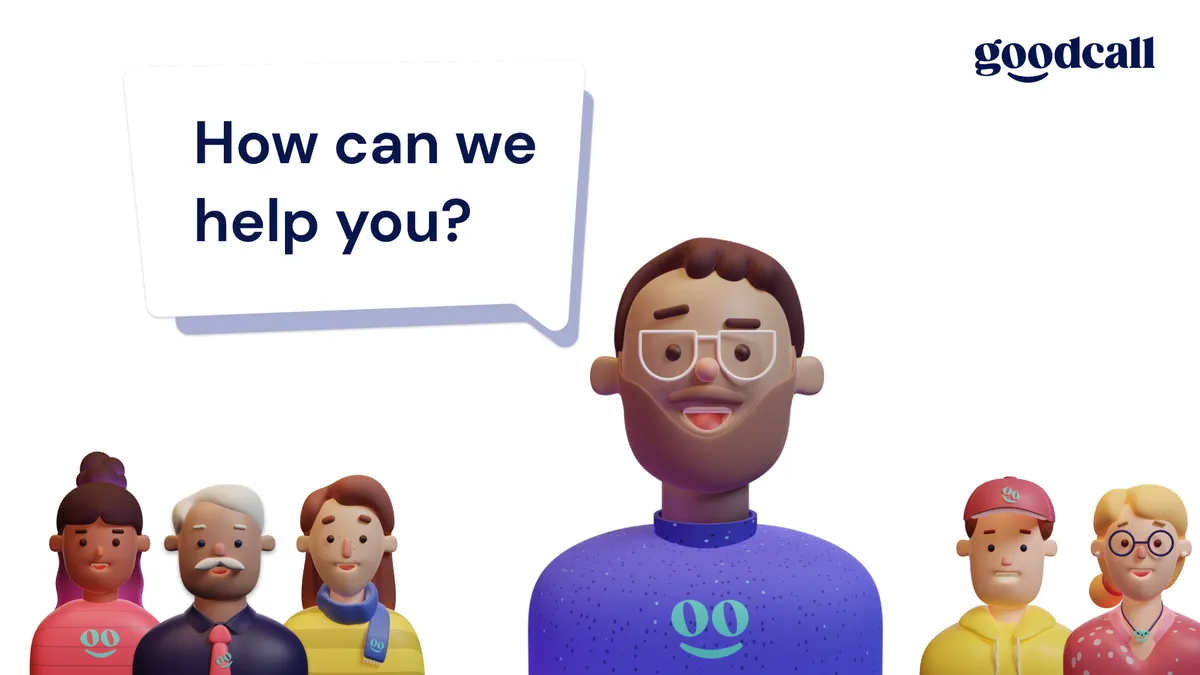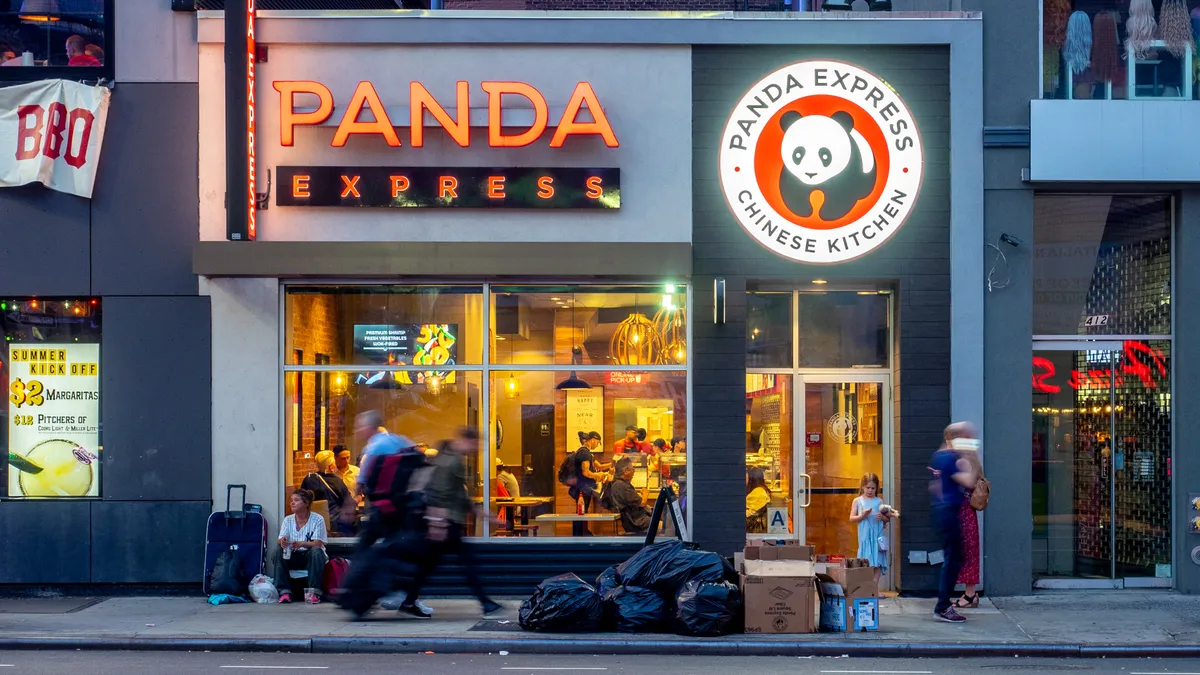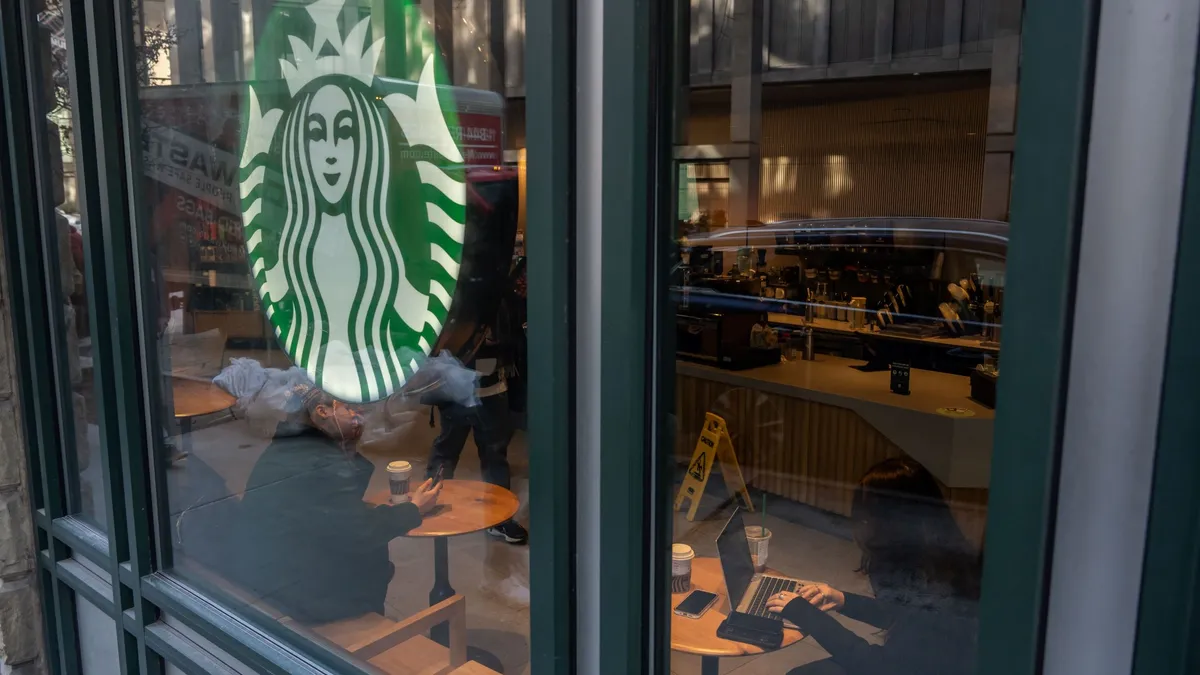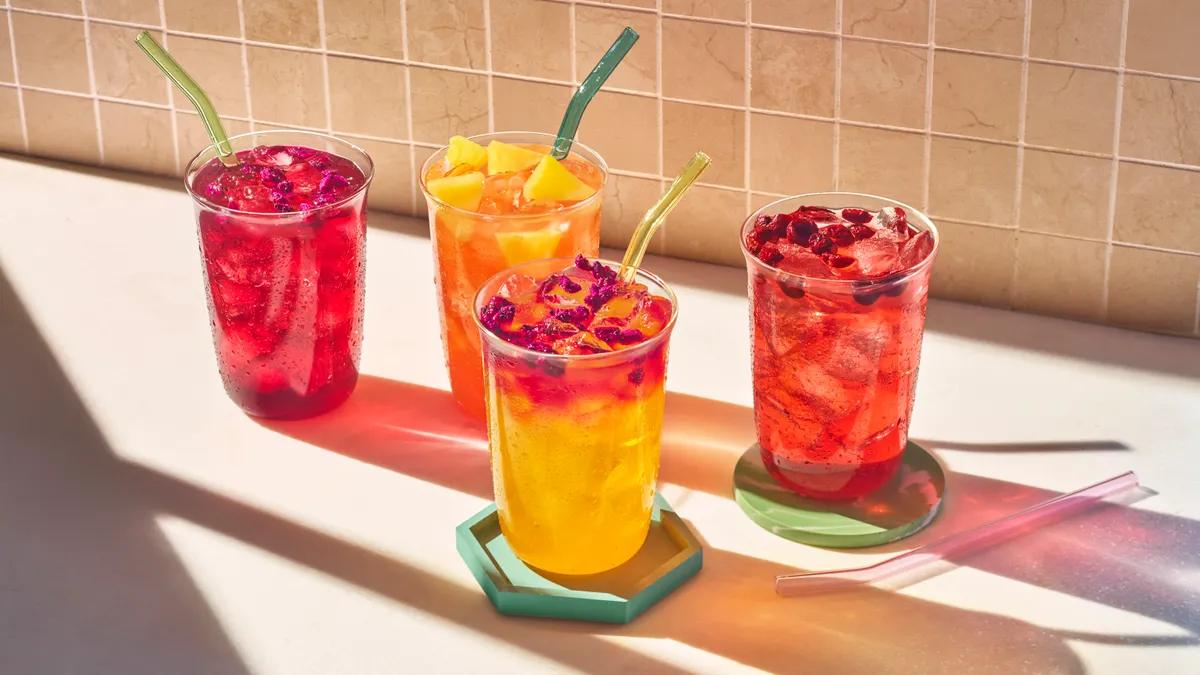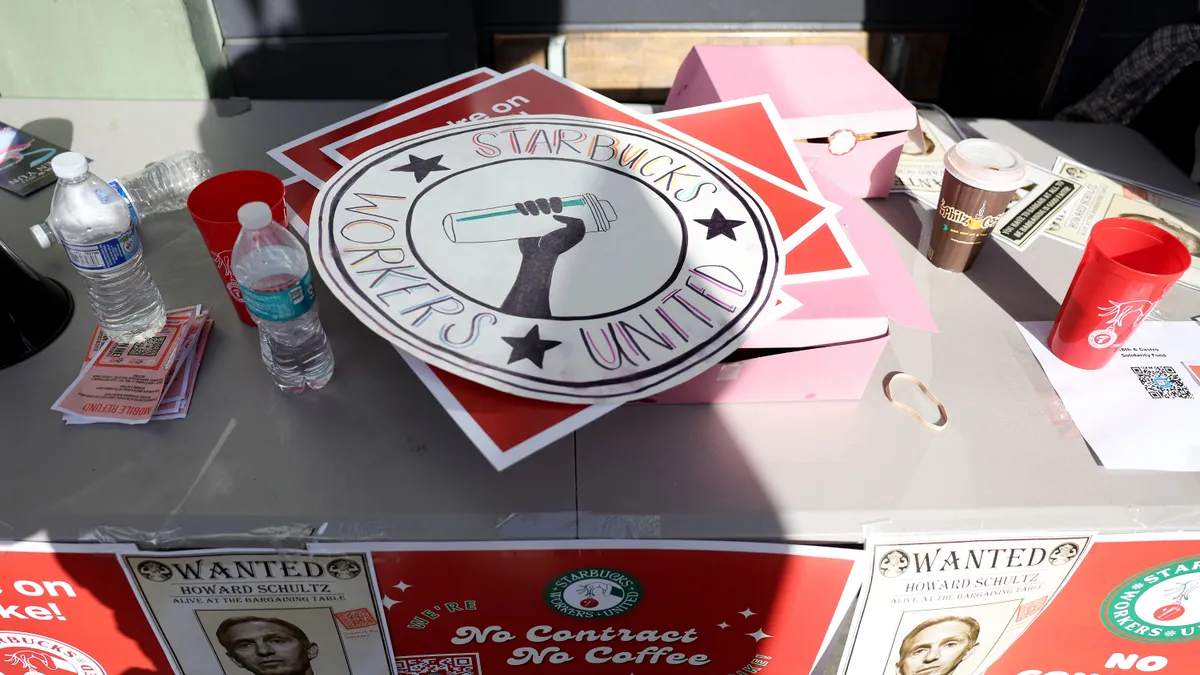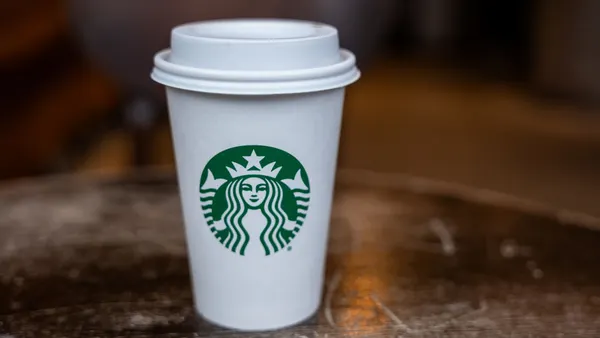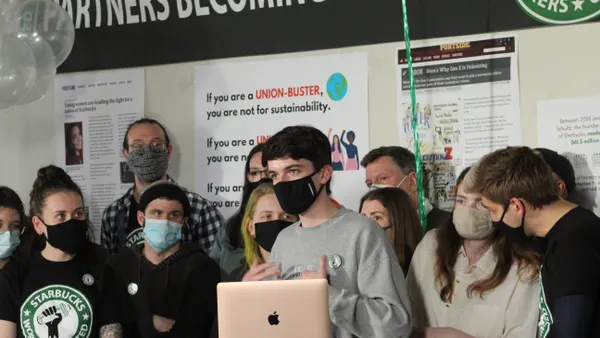During a restaurant’s dinner rush, a ringing telephone can go unheard, pushing customers waiting on a busy line to visit a competitor or cook at home. As inflation forces consumers to be cautious with their spending, the competition for consumer dollars has grown more intense. Restaurants can’t afford to miss phone sales, nor can they afford to leave their front-of-house understaffed.
Companies like Goodcall, Popmenu and HungerRush have landed on a possible solution to capture consumer spending and ease labor pressure: automated restaurant phone systems.
While not as eye-catching as a fry cook made out of machined aluminum, or a robot busser, these systems are designed to meet specific operator pain points. Automated phone tech uses conversational artificial intelligence to take customer orders, answer questions about operations or direct customers toward digital channels.
“We came up with the idea because of firsthand experience of sitting with restaurant owners and watching the disruption that they had to experience,” Tony Roy, Popmenu’s president and co-founder, said. “Because they didn't have enough staff to simply answer the phone.”
Some large chains have recently invested in voice ordering tech, with McDonald’s testing AI drive-thru voice ordering. But others are deploying automated phone answering systems. Pizza brands like Jet’s Pizza and Marco’s Pizza have both tried phone ordering systems. Applebee’s offers phone ordering at about half of its locations, according to the Wall Street Journal.
Automated phone answering companies are still relatively new, and when given a choice, many customers still opt to talk to workers or managers. But these firms claim to offer several advantages for restaurants.
Labor savings
At the most basic level, phone automation tech offers labor savings by freeing up staff from answering the phone. At Bevri, a Georgian restaurant in California, owner Pavel Sirotin said staffing shortages following the COVID-19 pandemic made it difficult to answer the phone and balance other tasks, like front-of-house operations or preparing pickup and delivery orders.
“We were hit with the labor shortages and essentially, sometimes there would be like one server. Sometimes it's just one of us,” Sirotin said. “We could never answer the phone. And it was just ringing and ringing. People had all sorts of questions: they wanted to place an order, they wanted to check if we're still alive.”
Sirotin knew Goodcall’s founder and CEO Bob Summers, and was excited to try Goodcall’s automated calling system at Bevri. Once installed in September 2021, the system, which Summers said would be able to answer thousands of calls simultaneously, proved an aid to Sirotin’s operation.
“Goodcall helped us answer more than 4,000 calls,” Sirotin said in August. “Multiply that by about, on average, five minutes per conversation, [and] that's how many minutes we freed up.” He added that this phone technology has led to improved experiences for customers who dine in, as servers are freed up.
Labor savings may be difficult to quantify, Aaron Nilsson, COO at Jet’s Pizza, said. Jet’s Pizza uses HungerRush’s automated phone answering system at about one-third of its 400 stores. Despite the difficulty determining the precise savings from one tool, Nilsson said, the automated phone systems can relieve pressure on the staff by directing customers to digital channels.
Jet’s Pizza uses HungerRush’s text-to-order feature, in addition to its phone answering tech. The text-to-order feature works with customers to ensure their orders are comprehensible and accurate before sending them on to Jet’s. That feature compliments the labor saving potential of a robotic phone answering system by diverting customers from the phone.
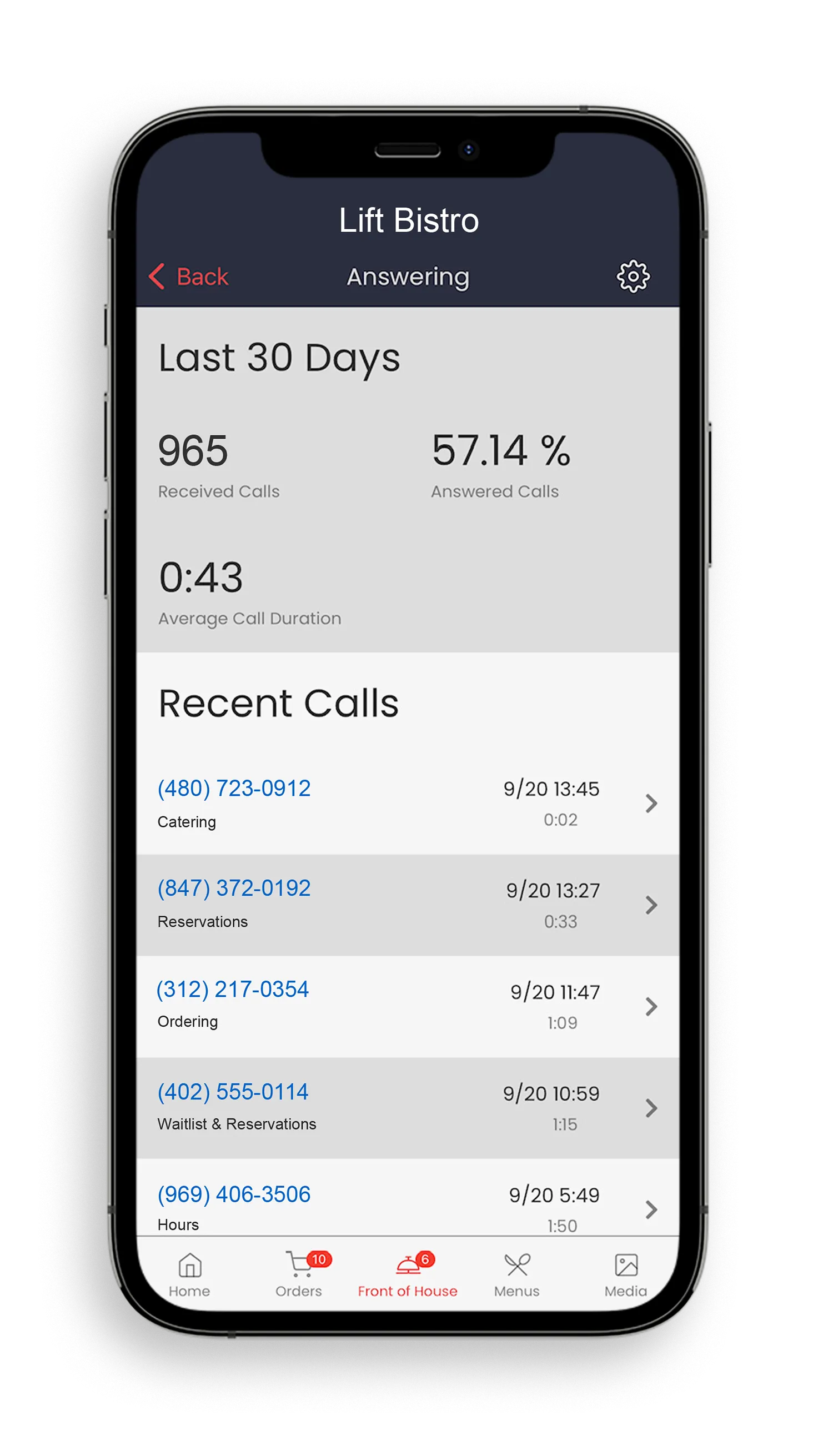
Consistency
In addition to labor savings, AI-powered phone answering systems offer another advantage: consistency. A computer won’t forget to upsell, and can follow the rigorous instructions laid out by operators. This means the technology can add incremental sales while preserving order accuracy, at least in theory.
“The bot is smart enough [to know] if you order X, that means you may want Y, and then at the end…[ask], would you like a two-liter Mountain Dew with that,” Perry Turbes, CEO of HungerRush, said.
Nilsson said the bot’s consistency is a more significant feature than its labor savings.
“We always ask for an upsell,” Nilsson said. “There's actually a ticket improvement for using this right now, compared to [an employee] taking it over the phone, because the robot never has a bad day.”
Jet’s orders taken by the robot are about $1 larger because the robot tries to upsell on every order, leading to a marginal gain in sales, Nilsson said. Turbes noted that the voice-recognition technology underpinning automated phone ordering systems becomes more accurate as more customers use it, since data gleaned from interactions can be used to improve the robot’s responses. But those answers are only as accurate as the data the bot can access.
Much of that information the bot pulls from Google listings, as Popmenu’s platform is integrated with Google, Roy said. But operators have the ability to change or customize that information, enabling the bot to keep up with menu shifts, hours changes or other operational differences.
If the robot doesn’t know what a customer is asking, the systems used by Popmenu, Goodcall and HungerRush have failsafes that connect calls to the store.
“We don't guarantee that it can manage every call,” Summers said.
Price points
Most of these companies are trying to keep costs low enough to encourage adoption. HungerRush charges a fee consisting of a small percentage of an order total, rather than charging a subscription or a per-call fee. But HungerRush declined to specify how large the per-order fees are.
Popmenu’s phone tech offering costs about $349 per restaurant unit per month, though the company frames this cost as about 47 cents per hour, as the phone system can answer calls 24 hours a day. The company does offer some cost breaks for large multi-unit operators, but did not specify what those were.
Goodcall’s costs scale depending on how many calls the robot is expected to receive, and how many skills it comes programmed with. Each skill is a discrete function, like the ability to answer questions about pet allowance in stores, or the ability to take orders, which, Summers said, is the most used feature. The company offers eight skills and 60 calls per month for free, and 16 skills and 600 calls cost $19 per month per location. The company’s premium offering — unlimited calls and some features not available on lower plans like a hold function — is available for $49 a month.
Limits
All three systems still use the restaurant’s employees as the ultimate backstop, as conversational AI isn’t something all customers are comfortable interacting with. At Jet, which uses HungerRush, the company’s phone system offers customers a coupon if they order through the phone bot. Currently, Nilsson says, a minority of callers order through the bot, but that number is rising, and customers who order through it once are likely to do so again.
While Summers touts the ability of automated phone systems to convert phone orders to digital orders, thereby securing for restaurants valuable customer data, he said only between 10% and 20% of callers shift from ordering by phone to ordering digitally.
Popmenu has tried to circumvent that low level of adoption by sending customers an SMS message directing them to order online. Tony Roy, Popmenu’s president and co-founder, demonstrated the technology for Restaurant Dive during a video call. Roy called a restaurant that uses Popmenu’s product and asked the bot if the restaurant served liquor.The bot said it did and rattled off several name-brand tequilas carried by the restaurant. When Roy asked to place an order, the bot told him the restaurant accepted online ordering and offered to text him a link. He asked to speak to a manager, and the bot put the call through to the restaurant.
There are other limits to the technology, however. Phone bots don’t always understand accents, and process a limited number of languages. Popmenu, HungerRush and Goodcall are limited to English at the moment. And it’s not clear if the claims to accuracy and labor saving will hold up on a larger scale.
Correction: A previous version of this article misstated Tony Roy's title. He is Popmenu's president and co-founder.



